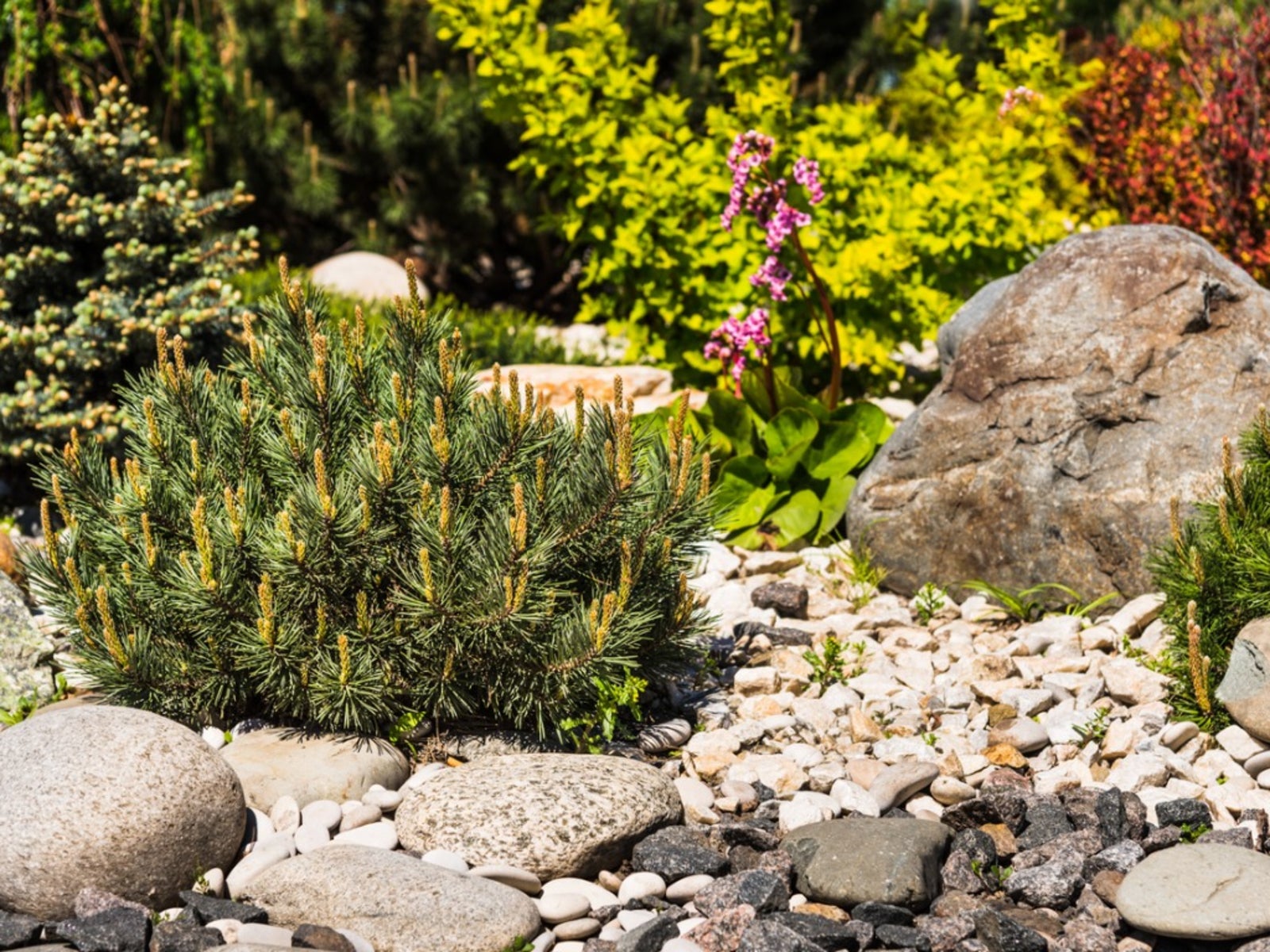Backyard Rock Gardens: Building A Rock Garden


A rock garden may be just the ticket for a difficult site such as a rugged, sloped location or a hot, dry spot. A carefully planned rock garden using a variety of native plants creates beauty and textural interest while providing an environmentally friendly haven for butterflies, bees and other beneficial insects. Wondering how to design a rock garden? It isn’t as hard as you might think. Read on for info about backyard rock gardens and a few helpful suggestions about plants for rock gardens.
Rock Garden Design
Building a rock garden is not at all difficult. In fact, it’s basically just a variety of low-growing plants nestled into an outcropping of rocks, though they may vary depending on the space. The best way to create a rock garden design is to take a look at Mother Nature’s natural handiwork, and then copy her ideas. The first task is to go on a rock hunting expedition. If you don’t have rocks in your area, you may have to buy them. Your local nursery or garden center can suggest stone dealers. If you have a construction site nearby, builders may be happy to have you haul a few rocks away free of charge. (By all means, always ask first!) Be sure to use real rocks and avoid man-made items like concrete and asphalt chunks, which won’t look natural, and can leach toxins into the soil. Once you have collected your rocks, bury them with their broadest side in the soil. Remember, the end result should look as if it were created by nature. Avoid consistent arrangements, such as placing them in a straight line or creating a pattern with them. For a more natural appearance, face the rocks the same direction they were facing in their original location. Arrange smaller rocks around larger ones so they appear natural. If your backyard rock garden is on a slope, place larger rocks or boulders towards the bottom of the garden.
Plants for Rock Gardens
Once your rock garden is in place, you’re ready to add some plants. Drought-tolerant, native plants are generally best for an authentic rock garden design. As a general rule, low-growing or mid-size plants are ideal because you don’t want to obscure the natural beauty of the rocks. Before you plant, be sure the soil is well drained, or you may end up with a rock garden filled with rotted plants. Most rock garden plants tolerate poor soil, but never soggy, wet soil. If puddles don’t drain relatively quickly, you’ve probably got a drainage problem that can be resolved by a generous addition of sand and organic matter. Be sure to take your climate into consideration before you purchase plants. Most rock gardens are located in sun, but if you have a shady rock garden, look for plants suitable for that environment. A few suitable plants for rock gardens include:
- Succulents, such as hens and chicks (if you live in a warm, dry climate)
- Small ornamental grasses
- Rockcress
- Ajuga
- Alyssum
- Heuchera
- Candytuft
- Dwarf iris
- Penstemon
- Verbena
- Cranesbill
- Ice Plants
- Pinks
- Snow-in-Summer
Gardening tips, videos, info and more delivered right to your inbox!
Sign up for the Gardening Know How newsletter today and receive a free copy of our e-book "How to Grow Delicious Tomatoes".

A Credentialed Garden Writer, Mary H. Dyer was with Gardening Know How in the very beginning, publishing articles as early as 2007.
-
 Try The Trend – Turn Any Bed Into A Keyhole Garden With This Clever In-Ground Composter
Try The Trend – Turn Any Bed Into A Keyhole Garden With This Clever In-Ground ComposterKeyhole gardening is an efficient and sustainable practice that saves space. Get started on this DIY project quickly and easily with an in-ground composter.
By Bonnie L. Grant
-
 4 Superfast Composting Methods: Turn Waste Into Garden Gold In 30 Days Or Less
4 Superfast Composting Methods: Turn Waste Into Garden Gold In 30 Days Or LessTry the fastest composting methods to turbocharge your pile and transform kitchen scraps and garden waste into finished compost in just a few weeks.
By Mary Ellen Ellis